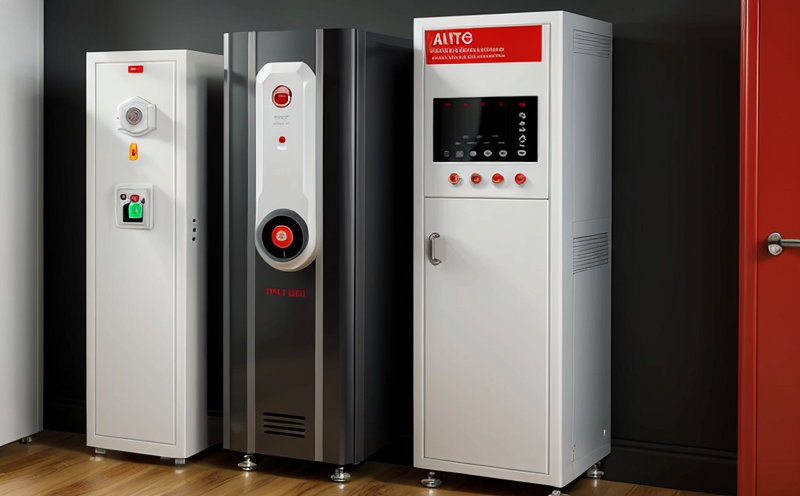Temperature Chamber Testing for Heat Detectors
The temperature chamber testing for heat detectors is a crucial procedure in ensuring that fire detection and alarm devices function reliably under extreme conditions. This test simulates the real-world environment where these devices are expected to operate, thereby providing valuable insights into their performance.
Heat detectors are designed to respond to elevated temperatures, triggering an alarm when the ambient temperature exceeds a predetermined threshold. The primary purpose of this testing is to assess the detector's sensitivity and accuracy in detecting actual fire conditions without false alarms. The test involves placing the heat detector within a controlled environment where the temperature gradually increases over time.
The temperature chamber can be programmed to simulate various scenarios, including rapid temperature rises typical of early-stage fires or slower increases characteristic of smoldering materials. This versatility allows for comprehensive testing that covers different types of fire hazards. During the test, the detector's response is closely monitored using sophisticated instrumentation, which records both the time taken for the alarm to activate and any false alarms.
The instrumentation used in these tests typically includes data loggers to capture temperature changes over time, thermocouples or resistance temperature detectors (RTDs) placed strategically within the chamber, and video cameras to document the detector's performance. The test parameters are defined by international standards such as ISO 7243:1995, which outline the specific conditions under which a heat detector should perform reliably.
A critical aspect of this testing is the preparation of the specimen, which involves ensuring that the detector is in optimal working condition before being introduced into the temperature chamber. This includes checking connections, ensuring that the device is free from dust or debris, and verifying its calibration against known standards. The specimen must also be positioned correctly within the chamber to mimic typical installation conditions.
The results of this testing are used by quality managers, compliance officers, R&D engineers, and procurement teams to make informed decisions about product design, manufacturing processes, and regulatory compliance. By identifying any issues early in the development process, these tests help manufacturers improve their products' reliability and performance, ultimately contributing to safer environments.
- Why Choose This Test: It ensures that heat detectors can function reliably under extreme temperature conditions, reducing the risk of false alarms and missed detections.
- Quality and Reliability Assurance: The test provides objective data on detector performance, enabling continuous improvement in product quality.





